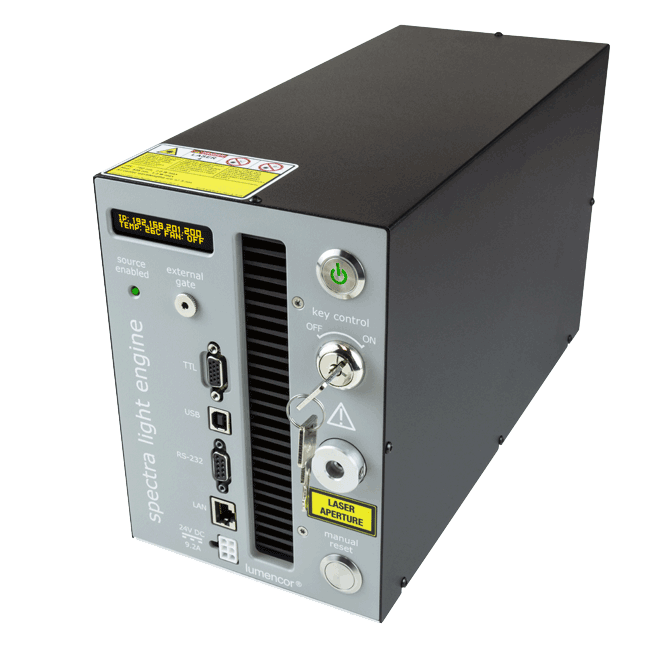|
Wednesday, September 18, 2019
|
|

|
|
|
Quarterly newsletter from Photonics Media highlighting the latest photonics news, features and products from Europe. Manage your Photonics Media membership at Photonics.com/subscribe.
|
|
|
|
sponsor
|

|
|
Fiber Optic Sensors Compete in Environmental Monitoring Market
Modern societies are facing rising concerns about global environmental issues, including an alarming rise in pollution of our seas, waterways, land, and air. As we bear witness to widespread industrialization along with mass consumption trends, environmental pollution has become more than a health issue; it poses a threat to entire ecosystems. Addressing these issues first requires us to know the nature of the beast. What is the scale of the problem? Fiber optic sensors could be the ideal tool in the armory needed to provide the real story of what is floating in our seas, leaking across our land, and wafting in the air around us.
|
|
|
|
|
|
Photoluminescence Spectroscopy Optimizes Perovskite Quantum Dots
Perovskite semiconductors have attracted tremendous attention in recent years because of the rapid rise of perovskite solar cell efficiencies — from less than 10% to more than 20% in less than five years — and the potential for the materials to provide low-cost solar power. The properties that make these materials well suited as absorber layers in solar cells also make them excellent emitters of light, and researchers have shifted their attention toward material optimization for optoelectronic applications such as lasers, lighting, and displays. Of particular interest for display applications are perovskite quantum dots (QDs), which combine the desirable properties of perovskite semiconductors with the excellent control of the light emission offered through quantum confinement.
|
|
|
|
|
|
Innovative Design of Optical Systems Boosts Industrial Metrology
Image sensor evolution has been extremely expansive since the first digital camera was created in 1975. In more recent years, increasing use of image sensors has rapidly driven camera chip evolution in many aspects: resolution, sensitivity, signal-to-noise ratio, speed (frame rate), and fill factor among them. This has evolved to a point where the traditional trade-off triangle between resolution, speed, and sensitivity becomes less relevant for selection of the best components for the applications. Acquiring images with more than 100-MP resolution, capturing a few hundred frames per second, and getting readable signals under low-light conditions can be achieved today with moderate budgets.
|
|
|
|
|
|
|
EuroPhotonics - Autumn 2019
|
|
| |
|
 FREDMPC
FREDMPC
Photon Engineering LLC
Unleash your engineering creativity and inquisitive mind with FREDMPC. Predict performance with higher confidence by tracing orders of magnitude, more rays, through your system. Experiment by varying more parameters to find the optimum hardware configuration. Ask more " What if...?"
Visit Website
Request Info
|
|
|
 The Next Generation Comes to Light
The Next Generation Comes to Light
Lumencor Inc.
Lumencor’s new Spectra III Light Engine.
- Eight spectrally optimized sources for DAPI, CFP, GFP, YFP, Cy3, mCherry, Cy5, Cy7 excitation
- Power: ~500mW / output, ~4W total
- Control: Exceptional power and wavelength stability
- Stability: Exceptional reproducibility
- Ideal for quantitation
- Ease of use: Small, cool, pre-aligned, Mercury-Free
- Applications: Fluorescence microscopy among others, OEM customization upon request
Visit Website
Request Info
|
|
|
|
|
|
2-Level Optogenetic Device Could Broaden Options for Large Mammal Behavioral Studies
An implantable microLED optrode array, developed by researchers at the University of Strathclyde and the University of Utah, is capable of exciting below-surface neurons in large mammal brains both by structured-light delivery and by large-volume illumination. Through its depth of access, heat control, and an electric delivery system that will be compatible with future wireless applications, the new array could advance the use of optogenetics in studies of large mammal brains.
|
|
|
|
|
|
Researchers at Chalmers University of Technology have demonstrated a terahertz detector made from graphene for use in next-generation astronomy detectors. A near zero-electron scenario, called Dirac point, was realized in graphene by assembling electron-accepting molecules on its surface. Graphene uniformly doped to the Dirac point was found to enable sensitive and wide-band coherent detection of signals from 90 to 700 gigahertz and, prospectively, across the entire THz range. The researchers’ findings indicate that engineered graphene could be a useful material for THz heterodyne detection.
|
|
|
|
École Polytechnique Fédérale de Lausanne scientists have bypassed light-bending losses that can occur when light pulses exit an optical microresonator, and have uncoupled the pulse repetition rate from the microresonator size by generating multiple solitons in a single microresonator.
|
|
|
|
|
Coming in the Next Issue...
|
|
| |
|
Features
Holography for Life Sciences, Hyperspectral Imaging, Lidar, EPIC Insights
Photonics Media is currently seeking technical feature articles on a variety of topics for publication in our magazine EuroPhotonics. Please submit an informal 100-word abstract to Editor-in-Chief Michael Wheeler at [email protected], or use our online submission form www.photonics.com/submitfeature.aspx.
|
|
|
|